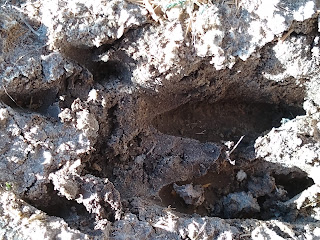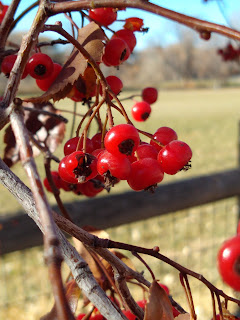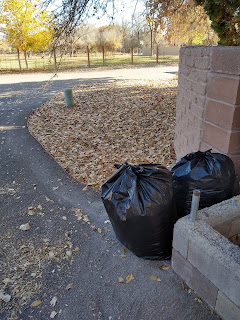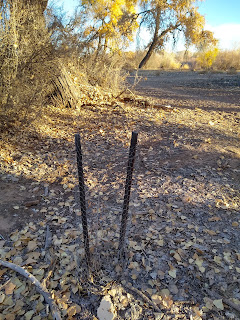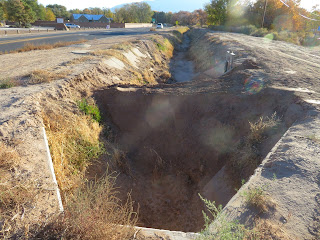The best, and worst thing about nature is how it defies our expectations at every turn. Even though it is winter, the temperatures and locations means nature is adapting in unexpected ways. While most trees are dormant, many small plants are growing in the leaf litter underneath them. While hummingbirds have left, cranes are now here.
There are many Red tailed and Coopers hawks in the bosque right now, and they have different hunting niches. I usually see the larger hawks hunting morning rabbits and the smaller ones chasing doves, but there is over lap. Many raptors watch the ducks, but I don't think they are very successful at hunting them for many reasons.
These ducks are preening and calm. They show none of the typical agitation we are used to seeing in ducks being fed bread at the Tingley ponds. The duckweed around them in uneaten and undisturbed, so this flock is new to the area. They are preening as a group using oil produced in a tail gland to keep their feathers organized and water repellent.
peacocks travel around the bosque and surrounding uplands but seem to be unable to survive without human support. They are feral rather than wild. They do not form flocks for protection from predators.
When ducks have been in an area for a short while, they often form these open ponds by dabbling in the mud and eating or displacing the floating duckweed. If the area is favorable, then ducks can change the environment pretty significantly.
Of course, this year the ditches have dried out. At the Cabezon trailhead there are actually four different canal courses. One of them still has water, but the others contain plants growing like crazy in the moist dirt that is now full of air pockets. This picture shows a small desert marigold, which is growing pretty thickly in some areas.
These leaves are some sort of aster species. I wasn't able to figure out which species it will eventually become, but I think it is annual sunflowers.
Cockle-burrs are pretty amazing plants and found along the loose sandy edges of the Rio Grande river in large numbers.
Humans are a big influence of the nature in the bosque. The easiest way to prevent human's destruction is simply to prevent people from going into places. A surprisingly large part of the bosque is off limits to people. This is not practical along the public ditches, so a delicate balancing act has to occur.
The bosque is not a very natural environment. It really is just natural when compared to the busy cities most people have come from. Many different public entities spend a lot of time during the winter months controlling growth and cleaning up after people. Here, the MRGCD are spraying to control weed growth along the edges of a canal. This is for the purpose of weed control to reduce fire risk, which is very high this year.
This picturesque photo is actually showing the dust kicked up by the heavy trucks that haul away all the trash humans produce. The bosque is often used as a park by many thoughtless humans who do not see the effort that has to go into cleaning up after their quick visit into "nature". The lack of moisture and the relentless pounding of the delicate soil by rubber tires has turned many dirt roads into dust clouds. There actually is a speed limit of 15 mph on dirt roads to keep the dust down. I have never seen a vehicle follow the posted "Slow no dust" signs.
Many people probably do not appreciate that Corrales has 2 rivers; one above ground, and one below it. People dig ditches to irrigate the ground, but also to drain away the high water table. This area was originally a fertile marsh. The ditches transport soil material and often have to be cleared out. In the winter this has less chance of being as destructive to wildlife.
This picture shows that the water table will seep back into the channel, if the ditch is deep enough. The sediment in this ditch is pretty thick. Notice the water is very clear, it is literally filtered and free of any plant growth.
These pools are going to be colonized very quickly by organisms nearby. Clams, mussels, snails and crayfish likely will need some rain and a little heat to be able to move into their new homes. This water came from the aquifer, not the siphon far to the north.
how animals move is pretty fascinating. This tiger butterfly caterpillar is traveling between trees. It is surprisingly fast for such a small insect.
This picture shows a proliferation of puffballs, moss and lichen. The fine spores fly into the air and might settle in a suitable habitat. The odds of successful travel seem minuscule.
Seeds in angiosperms do much better by investing more in their protection. This rose hip has protected the seeds inside. incidentally, the fine hairs found inside this rose hip are used to produce itching powder.
Trees are adapted to their environment. This big old tree is well balanced and firm. Notice how there is no other trees under the leafy umbrella. This old tree has a guardian protecting it's environment
This cottonwood stand shows how the many canopies interfere with each other and the trunks will all be more scraggly and weaker. On the left are two branches that have grown into each other and risking infections. The bosque is in dire need of thinning in many places for many reasons. There simply is not enough room for all the life trying to grow here.
This elm shows the bark stripping of a beaver. This tree was fed on, but not chewed enough to try to bring it down.
This tree was protected by wrapping a wire collar around the base. Unfortunately, not only will a beaver chew through this, but the leaves have been trapped against the wood and has begun to rot into the sapwood.
Old cottonwoods often have broken ends from rough weather and old age.. The rot from fungi is not usually a big problem, the softened wood is usually going to have a few woodpecker holes in them and often a few hidey holes for squirrel or small bird families. You can see the bracket fungus in the middle of the picture.
Here is a butt rot in the bottom of the tree. This injury is likely to lead to the death of the whole tree. I think the wire was added afterward in a classic case of shutting the stable door after the horse has bolted.
This old tree is also rotting, but the rot is likely not going to be lethal. The general rule of thumb seems to be that loss of less than a third of the diameter of the tree will allow the tree to stay upright.
The season now is the time for mowing the ditches because most birds should not be nesting. It is interesting to see the huge amount of cattail seeds that are left after the cutting has happened.
The mowing always seems leave the plants too short to me, but there might be other reasons to cut the plants short. I have noticed the city up the hill and down the valley like to keep things short to reduce trash build up, or at least keep it visible.
This picture shows an earthen dam placed to divert the irrigation water into the upper sluice channel. Presumably this means they are about to clean out the ditch that runs along the South end of the Corrales main road.
Another earthen dam, but this one is made courtesy of a local beaver. The stillness of the water is pretty impressive with the reflections of the bright yellows from the sky above. I notice the beaver earthen dams are removed by people far less that the stick dams they create further to the north of Corrales Village. Maybe more camouflaged?
Another beaver pond showing how these animals are able to naturally prevent cattails from rooting in the deeper water. I know the muskrats that live in a beaver dam also like to eat these tubers.
The planets and moon in the sky put on a light show these last few nights. Quite a few people commented on the view of Venus and the moon in conjunction.
The moths that use the moon for navigation seem to still be out. The temperatures are way hotter than they should be for this time of year. The species is one of the common noctuidae species. I am finding many moths hiding in the leaf litter of open fields during the day.
The katydids seem much too large to be invisible, but in the green trees they can only be heard, not seen. I guess now they have suicidal tendencies that everything is yellow. This one is not going to live long on this concrete post.
A migrating carpenter ant. This species is out and looking for old trees to form nests in. I don't think they are very dangerous to home constructions, but I'm know most people tend to kill first and ask questions later.
Here is some sort of ground beetle I found hiding under a log in the ditch. The colors seems completely unnecessary for an insect living beneath a log. The small gold legs give this insect a feel of a piece of jewelry. The surprise I get learning new things about nature is a never ending present to myself. It is oddly satisfying knowing I will never know it all.






